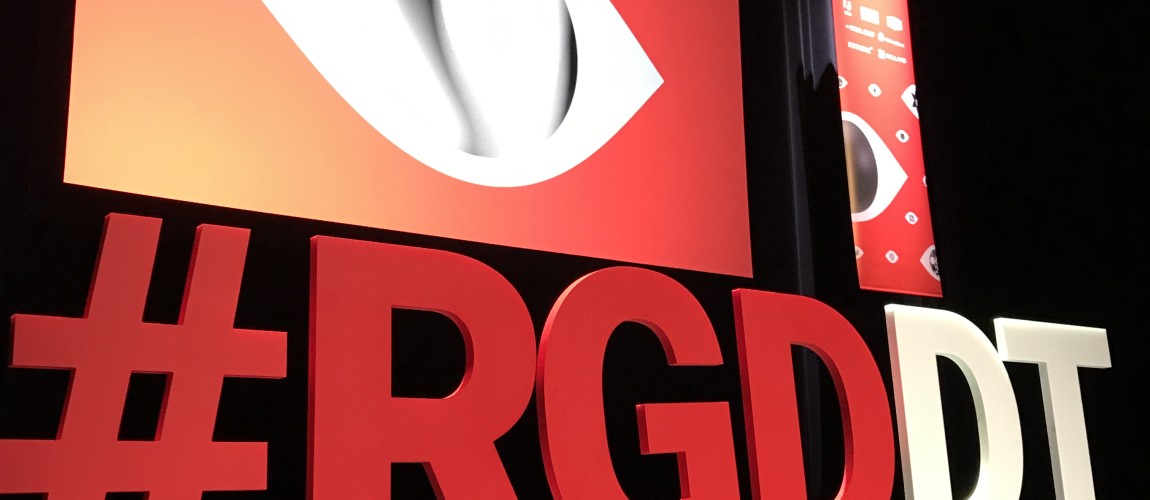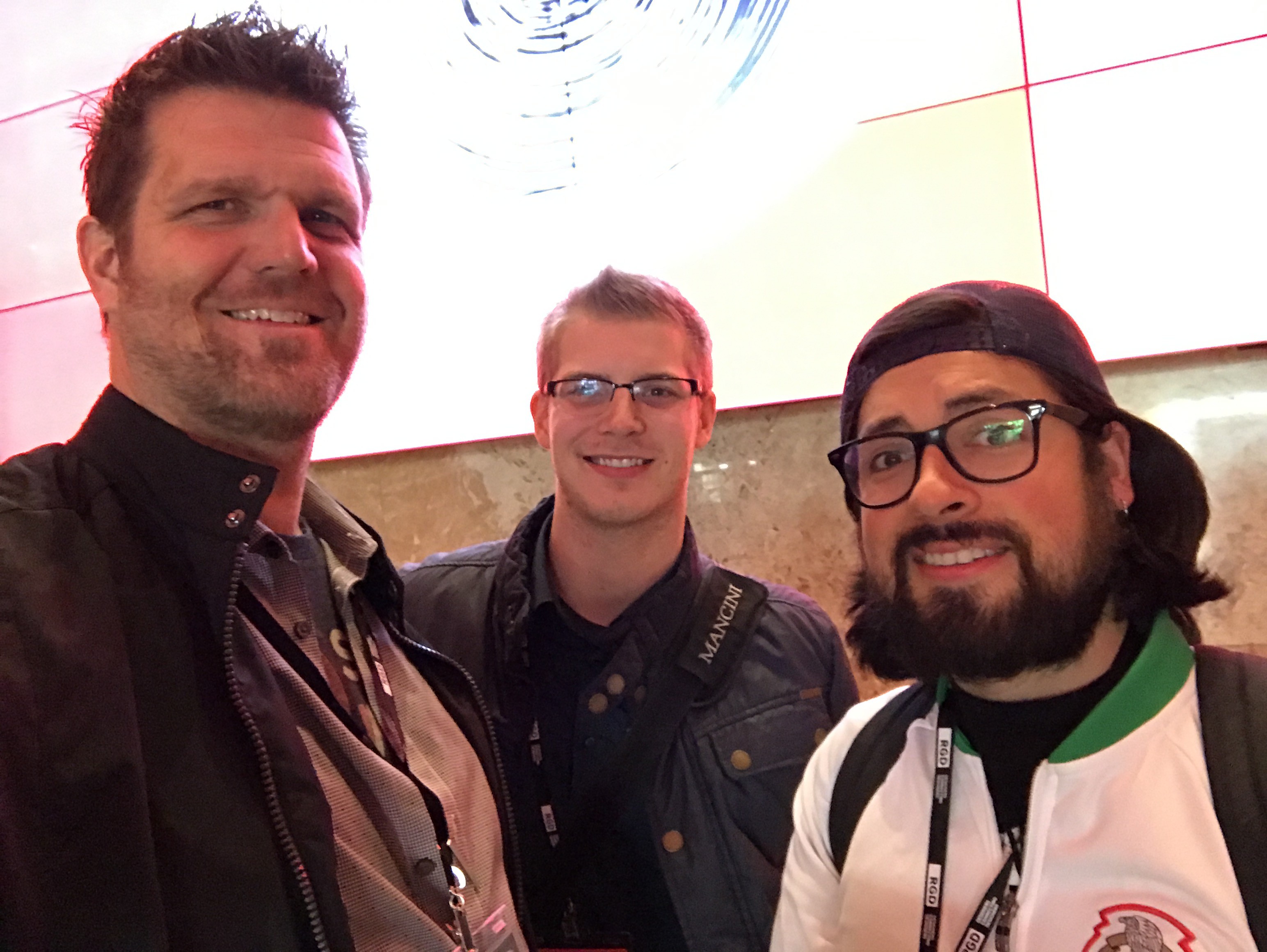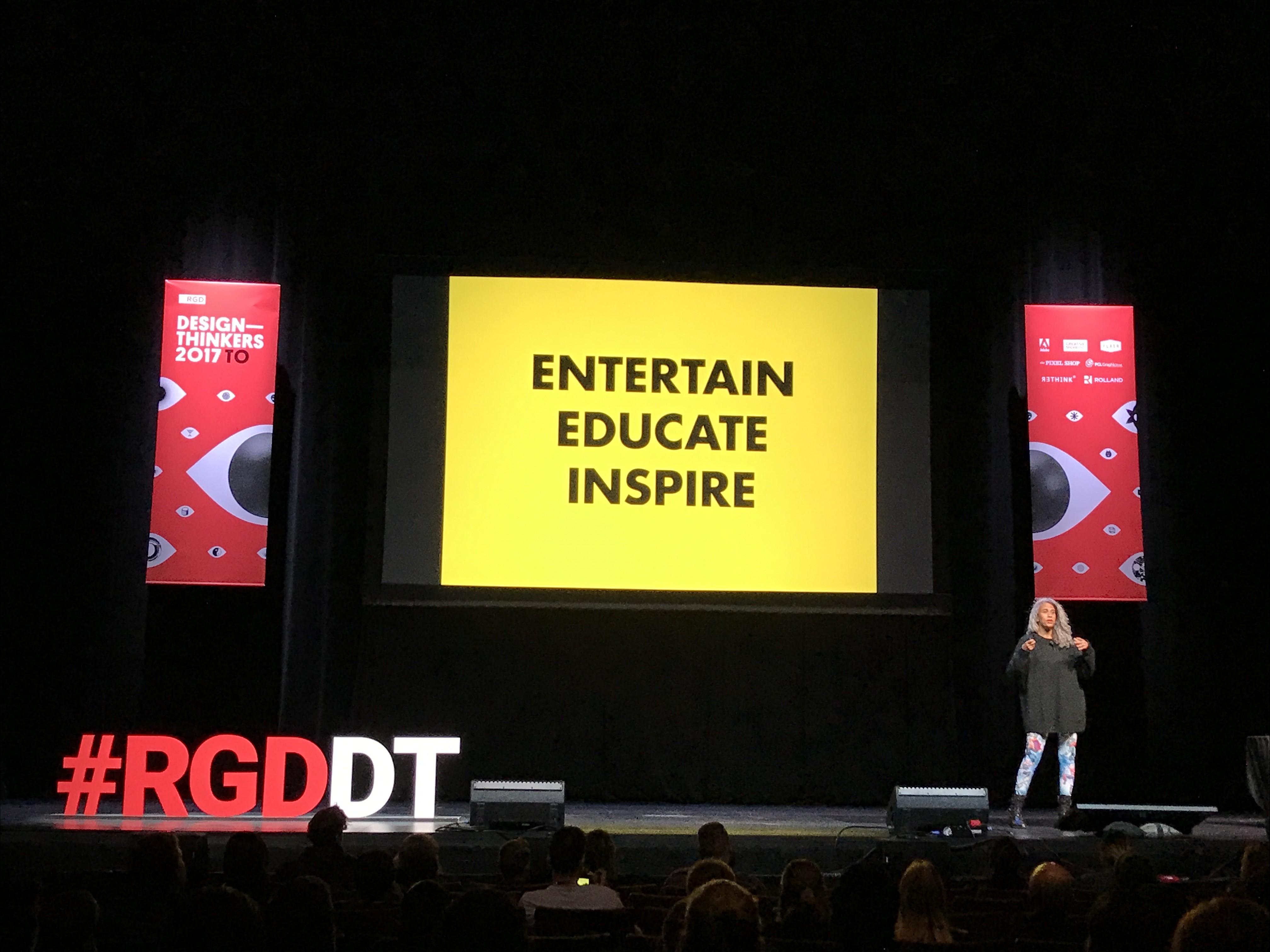Industry Insights
Design Thinkers 2017

For 18 years now, the Association of Registered Graphic Designers has hosted the annual Design Thinkers Conference in Toronto. The goal of the conference is to “gather diverse perspectives to explore the processes of design and creativity”. This year, Diego, Nick and myself boarded the train and headed to the Sony Centre for the Performing Arts in Toronto to participate in this creative thinkfest. Below are a few of our observations and 5 key take-aways from the conference.
It is good for anyone to get out occasionally – to leave the familiar rhythms of the 9-5 - and experience something different. When done properly it’s an opportunity to meet new people, expand your perspective, experience new sights and sounds, and to be challenged by new ideas. This is especially true for designers who are in the business of studying and understanding people, helping people communicate their ideas and bringing those ideas to life. Perhaps for designers such experiences are not only good, but necessary.
That’s ultimately what motivated us to attend Design Thinkers 2017 in Toronto earlier this month. During the two-day conference we sat through 14 different sessions; some disappointing, some challenging, and some surprisingly enlightening. But I’ve come to expect that after years of attending similar conferences. Inevitably there will be content at these types of events, which will be unhelpful or uninspiring. The opposite is also true. I’ve discovered, that there will always be valuable insights, rocks to turn over in our minds if we’re paying close enough attention.
Among the typical designer prima donnas promoting the idea that designers are people who get paid to do whatever they want and complaining about clients who “just don’t get it”, there were also thoughtful, intelligent, and seasoned voices. We listened intently, took notes, debated key points over lunch, and debriefed on the long train rides home. After mining through the 2 days of content here is the gold* we took from Design Thinkers 2017.
*in no particular order

Barrier to Good Design
The biggest barrier to good design? Unclear goals.
Compounding this problem further is the fact that in most cases there is a massive communication gap between the business/marketing side of the house and the creative side of the house. The solution? Write a creative brief.
While a picture may be worth a thousand words, the right word can inspire a thousand images. So write the brief! Make sure to include a target (or targets), facts, features/benefits, and any objectives you have when writing your brief. Of course, you can always add more information if you like, but don’t leave out those four elements. A bad brief is almost as bad as not having any brief at all!
As designers, we have a responsibility to be more than order takers. We have a responsibility to educate clients and guide them through an objective process towards meeting tangible business objectives. We must ask challenging questions and strive towards objective solutions. And throughout this process we need to organize the chaos and translate:
- Feelings to words
- Ideas to goals
- Features to benefits
- Stories to insights
This is how we bring clarity to the design process. This clarity leads to great design.
Clarity = Kindness
Blake Howard shared the idea "To be clear is to be kind." It reminded us of a favourite quote of ours: "Clarity is an act of love" - Douglas Wilson. (https://compasscreative.ca/brand/strategy) Clarity is one of our core values at Compass Creative, so the concept wasn’t new to us. Blake’s comments were nonetheless a good reminder of what we stand for and why. It was very affirming to hear a designer of his calibre speak of clarity and kindness with such conviction.
““What is the point of being legible if nothing inspires you to take notice in the first place?””
Wolfgang Weingart
There is a time for mystery and fun too but graphic design, in most applications, is about creating clarity. Our brains are wired to conserve calories. Clarification means eliminating the unnecessary so that what’s necessary will speak. Cuteness and cleverness can and often do compromise clarity. So it’s important to clearly identify the objective(s) of any given project. (Write the brief! See above)
Love Your Clients
Well that kind of goes without saying doesn’t it? But what does it look like?
For starters: Commit to doing good work. Once you’ve made that commitment, it’s time to get to work. Remember, the best clients value their time. They want someone they can trust with their time and money. They will pay for convenience and service. They don't want to micro-manage. Will you love them enough to care for them in this way?
Creative thinking; the Trojan Horse of change.
Change requires:
- Vision
- Creativity
- Incentives
- Resources
- Plan
Without vision, there will be confusion. Without creativity, you blend in with everyone else. Without incentives, you will meet resistance. Without resources, your best efforts will leave everyone frustrated. And without a plan, you’re wasting valuable time.
To truly be innovative, you must understand the problem fully and yet have no idea what the solution will be. Social change takes innovation. It begins with clear objectives, a shared vision, and common values. Make sure that you have an actual problem to be solved and not a solution to be vetted.
Put the end-user at the centre of your work.
Lead with Character
By now, you’re probably realizing that designers need to be people of character.
They need to be rigorous thinkers, great communicators, curious and holistic observers, problem solvers, team players who love not only their clients but also their clients’ clients. Designers are at once persuaders (making people want things) and creators (making things people want). We’re stewards of a visual language. It’s a great power, and of course, it comes with great responsibility.
We heard bold claims that designers used to design monuments but increasingly we’re designing movements. In fact, this year we noticed a lot of social commentary coming from the stage. What was ironic, however, was that the speakers almost unilaterally assumed that designers all think or feel the same way. There was a gross lack of diverse perspectives on the social and political issues that were being talked about. If we designers fancy ourselves as agents of change – as many of the speakers did – and wish to take responsibility for shaping our world in new and better ways, then we should probably follow our own advice and process.
I hope we hear more from the design community in 2018.

As an aside... We also learned that a British accent instantly makes speakers more credible than North Americans. It sounds smart, authoritative and witty… proving presentation still counts for something. Cheerio! ☺

Written by Jason Bouwman, RGD
November 28, 2017